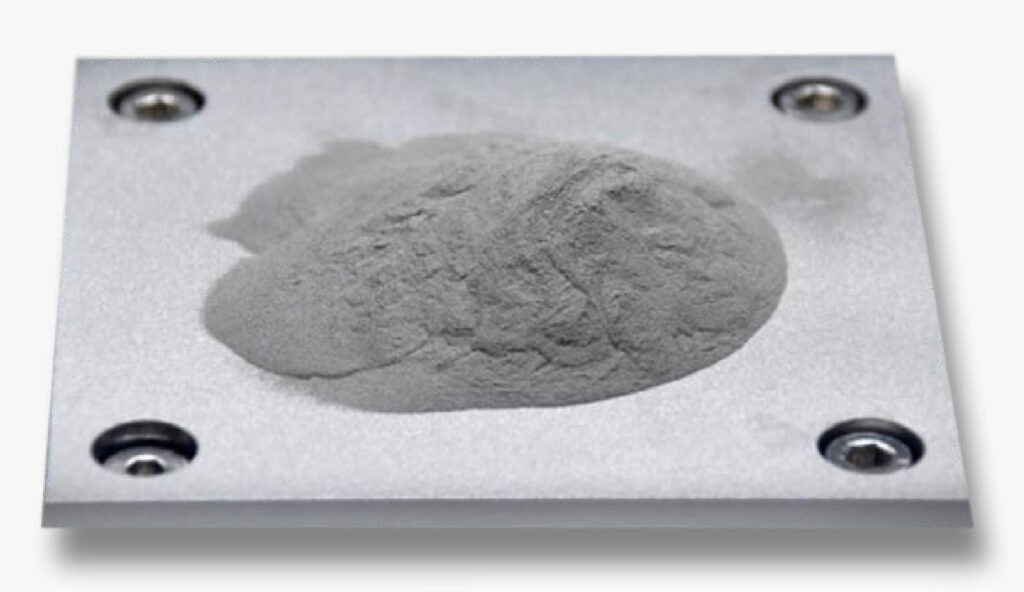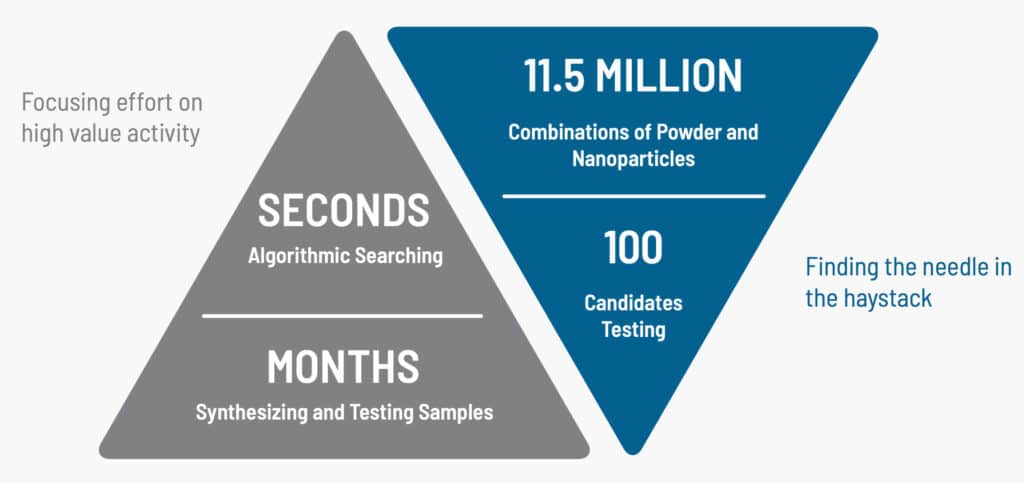Executive Summary
FAST TIME TO MARKET
Two years after research publication – commercialized with NASA as the first customer
FIRST TO MARKET
First additive alloy registered by the aluminum association
TIME SAVED
Experimental lab work reduced from years to days due to materials informatics approach
PERFORMANCE IMPROVED
New alloy powder retains strength when used in off-the-shelf 3D printing equipment

“Once we told them what to look for, their big data analysis narrowed the field of available materials from hundreds of thousands to a select few. We went from a haystack to a handful of possible needles.”
—Brennan Nahata, HRL

The Challenge
Additive Manufacturing (AM) enables the production of near-net-shape parts, reducing materials wastage and the need for welding and other post-processing. The Aerospace and Automotive industries need alloys that are lightweight, and have high strength at extreme temperatures. To date, 3D-printed aluminum alloys have been inadequate for widespread use. HRL Laboratories, jointly owned by Boeing and General Motors, utilized the Citrine Platform to help find a 3D-printable aluminum alloy strong enough for aerospace applications.


The Approach
HRL wanted to find nanoparticles that nucleate a microstructure less prone to hot cracking, a phenomenon where cracks form during the solidification of 3D-printed metal. Citrine combined classical nucleation theory, rules on lattice spacing, thermodynamic stability, and density, and materials informatics, to rapidly search through 11.5 Million combinations of powders and nanoparticles.


The Results
Citrine identified 100 candidate combinations of powder and nanoparticles that optimized the desired properties for the HRL team to test. The resulting material AL 7A77 is the first high strength Aluminum Alloy powder feedstock for off-the-shelf AM machines that is registered with the Aluminum Association. The first commercial customer for this new product is NASA Marshall Space Flight Centre.
The technique used here can also be used to make unweldable metals weldable, another wide-ranging application and commercial avenue.
What next?
Materials Informatics is transforming the process by which new materials and chemicals are developed. Part of the larger digital transformation in manufacturing, the application of data-driven methods to materials R&D has huge potential benefits. Through an AI-enabled materials data infrastructure, the Citrine Platform helps customers accelerate their rate of innovation, whether they develop new materials faster to meet customer and market needs, or reduce raw materials & processing costs through data-driven assessments. Contact us to find out how our platform can accelerate development across your R&D organization.

